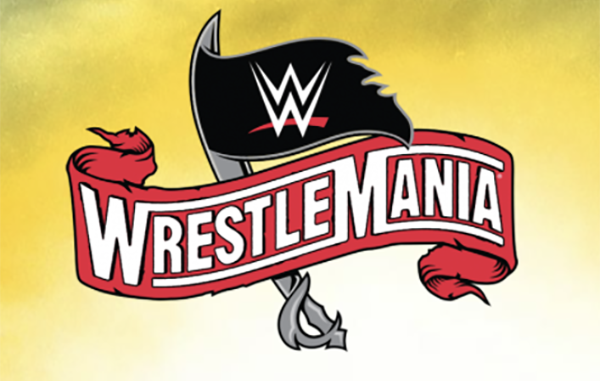
SPOTLIGHTED PODCAST ALERT (YOUR ARTICLE BEGINS A FEW INCHES DOWN)...
So, how do you fix, really fix WWE? How can you ensure the company grows now, in 2020, in measurable, financially healthy ways? How does the company navigate the most uncertain times that not only it has ever face, but the entire entertainment world has ever faced? How does WWE satisfy Wall Street, the stockholders, the Network Platforms, the Saudi Arabian Royal Family, and the fans, all at the same time?
The guaranteed money television contracts that will ensure WWE profitability for the time being don’t hide the ugly truth that while the Fox and NBC Universal television networks will make good on their side of the contracts, WWE has from their start disappointed the network expectations. A troubling business partnership with the Saudi oligarchy also seems fraught with financial uncertainty. The results from every other revenue stream were troubling well before the currant pandemic.
 There’s also no hiding months of management, creative, and natural disasters that have led to significant audience, monetary, and unprecedented competitive industry losses
There’s also no hiding months of management, creative, and natural disasters that have led to significant audience, monetary, and unprecedented competitive industry losses
Much of what I’m about to suggest here, once I get deeper into it, is going to sound counter-intuitive to both WWE management, management throughout the industry, many of today’s professional wrestlers, and most fans. That’s exactly why it will cut to the core of both what’s wrong with WWE and the opportunity it now has to become an actual growing entertainment business and cultural force once again.
The problem is encapsulated in one telling detail about WWE business in 2020: The average NXT viewer is 58 years old. NXT is literally branded for the NeXT generation, you know, where young fans come for THEIR wrestling.
Now, it may have occurred to you that I – who am about to drill deeper into advocating WWE change than either anyone in the business or in the business of covering the business has so, am, in fact, at age 60 right around the average NXT viewer. That’s true, and that’s why you won’t see any specific suggestions as to which current modern culture should be exploited or who the specific people are to put what I’m about to suggest in place. I just suggest they do all this, not appear to do it, and not to give anyone else cover and credibility while they do what they want.
Start with this goal: WWE will market professional wrestlers with the charisma and star power to excite fans at their core. They will market these stars to fight other professional wrestlers with the same qualities over stakes and consequences that are also marketed to matter to those fans.
While all content will continue to carry the WWE Brand and be identified by the same, WWE content will now FIRST be branded by the top pro wrestler personalities in the company. Every event will be identified FIRST by the primary pro wrestlers in the main event:
Examples (I use past main-eventers here just as illustration.)
- House show – The Rock vs. “Stone Cold” Steve Austin for the WWE Championship
- Sunday Night Pay-Per-View – Ronda Rousey vs. Becky Lynch for the WWE Championship
- WrestleMania – The Undertaker vs. Kane in a Buried Alive Match
- Smackdown on Fox Friday Night – Bret Hart vs. Shawn Michaels for the WWE Championship
Further, every show on every delivery system will include only the package of tiered stars that build to the main event. Each show will clearly build to and center around its pro wrestling main event. Each show will be designed to first give the fan the optimal pro wrestling experience based around pro wrestling stars.
House shows will be a tight two hours and forty-five minutes long, including a thirty minute break before the final two main events. They will not include every storyline on their brand.
The three-hour Monday night show will consistently build to a main event that starts at the beginning of the third hour. The rest of the third hour will be centered around analyzing and hyping the consequences of the main-event results and culminate with the announcement of the next Monday’s main event.
The two hour Wednesday and Friday shows will build to a final main event, consequence hype, and next week’s main-event announcement.
The current names of the monthly pay-per-views, with the exception of Summer Slam, The Royal Rumble, and WrestleMania, will be completely dropped, to be replaced by specifically-named main events. The Royal Rumble will be the only pay-per-view centered around an annually scheduled stipulation. The rest will feature stipulations that will organically grow from major storylines, many or most of which will culminate in a decisive fashion at WrestleMania.
To best serve viewers’ attention spans, these shows will last a tight two-and-a-half hours. WrestleMania will last no more than an hour longer and the effort to place every roster member on the show as a reward for their loyalty will cease.
Pre-shows will be an hour of pre-recorded video packages ending with the night’s opening wrestling match. This includes WrestleMania.
These patterns will remain consistent and completely predictable. The most important thing featured on every show will remain the stars and the conflicts they have in the ring among themselves. We’ll explore further what goes into each show as this series progresses.
Every show will be first and foremost about two things, maximizing the experience of the paying fan and motivating him to want to purchase the next available WWE experience.
LOOKING AHEAD: Part 2: How To Pick The Most Effective Stars For WWE in 2020 (or more importantly, How NOT To Pick Them)
(Bruce Mitchell, @mitchellpwtorch on Twitter, has been a PWTorch columnist since 1990. His columns appear in the pages of Pro Wrestling Torch Newsletter and the PWTorch website. Thousands of hours of the Bruce Mitchell Audio Show, a weekly podcast that began in 2004, are also available in the PWTorch VIP website archives with in-depth long-form coverage of pro wrestling’s biggest stories the last 15 years. Bruce Mitchell teams with PWTorch columnist Zack Heydorn each week for the Bruce Mitchell Mailbag, answering VIP members questions in long-form discussions on current events and historical topics. GO VIP HERE.)




As usual for Bruce’s work, this is great, and I agree wholeheartedly — but it makes too much sense for WWE to do it. I am beginning to believe McMahon is ready to go home. Creative is the worst possible word to describe WWE. I honestly, completely, firmly, totally believe this is the worst roster by comparison in the history of this company.
I say that because if you pull out the creative team (which it should be completely overhauled) and allowed the “wrestlers/superstars” to come up with their own material, not only do I not believe 60 percent of them would fail, I believe they would fail miserably. WWE has created within their company a framework that consistently lectures its employees and fans that there is no one bigger than those three letters. When the “show” is the star, when a certain family is the attraction, there is a major, major problem, and so much of what they’ve done since 1998 has been built around a FAMILY. Think about that — not wrestlers, but a FAMILY.
It’s mind boggling.
The business model of the WWE Network has been brilliant, in my own opinion. But there has to be some re-working in many facets of their business. Bruce has laid out a good foundation with this first column, and it’s something most long-term wrestling fans would probably advocate. McMahon, though, he knows “better” than us. His daughter REALLY believes she knows “better” than us. Even after three months of no fans, they still don’t realize fans are the lifeblood of their business.
I’ll anxiously await part II of this column.